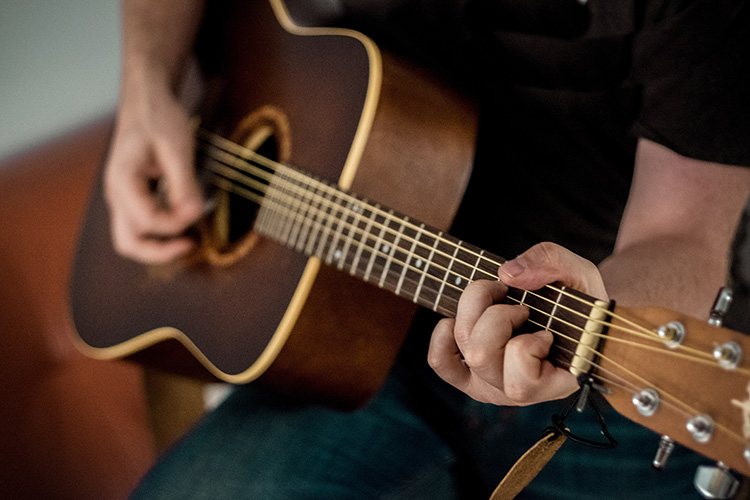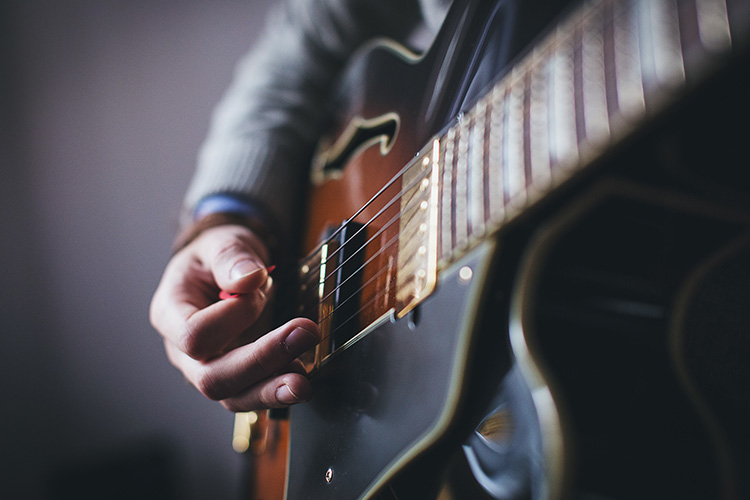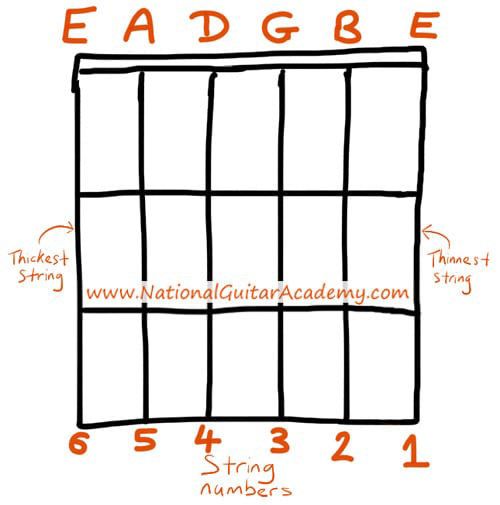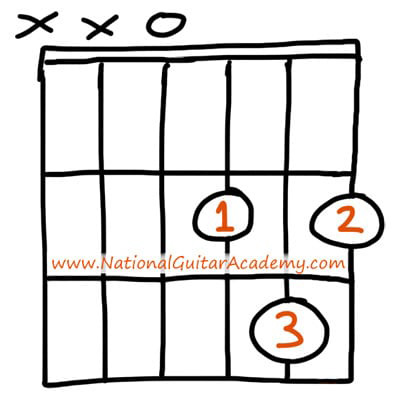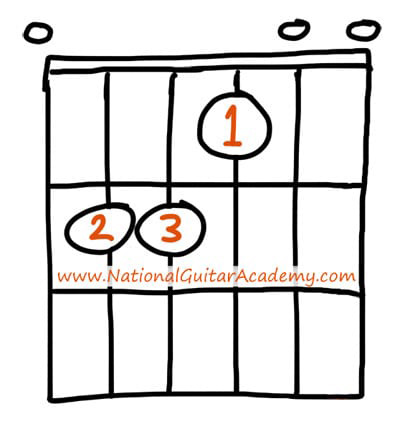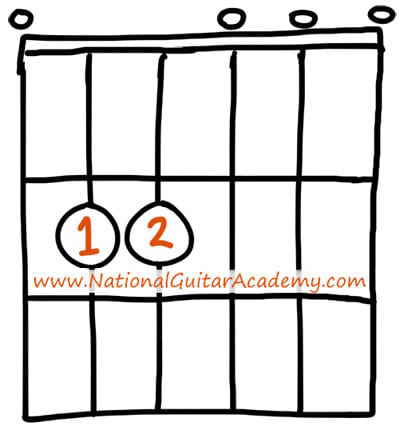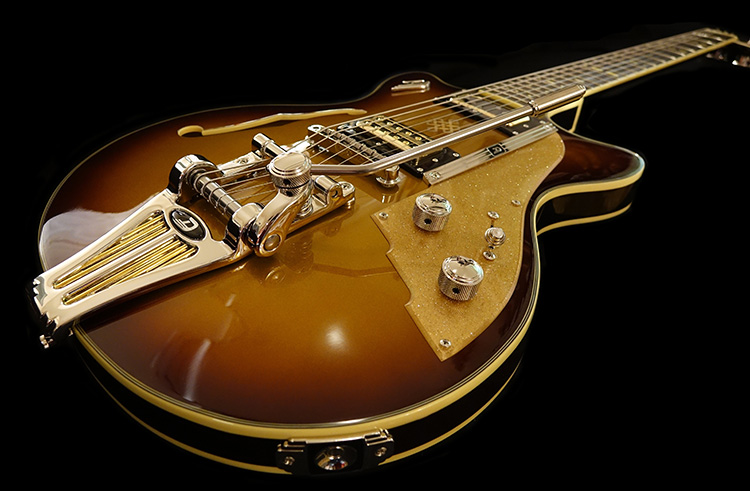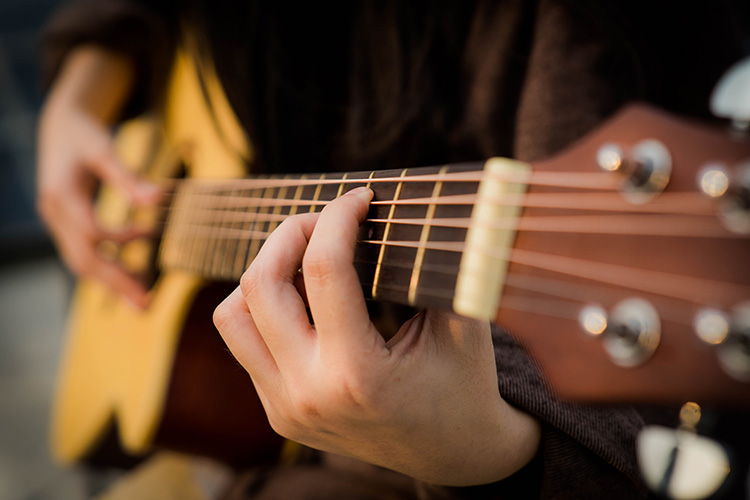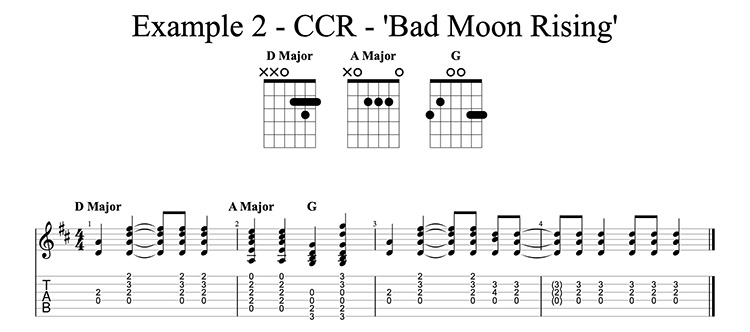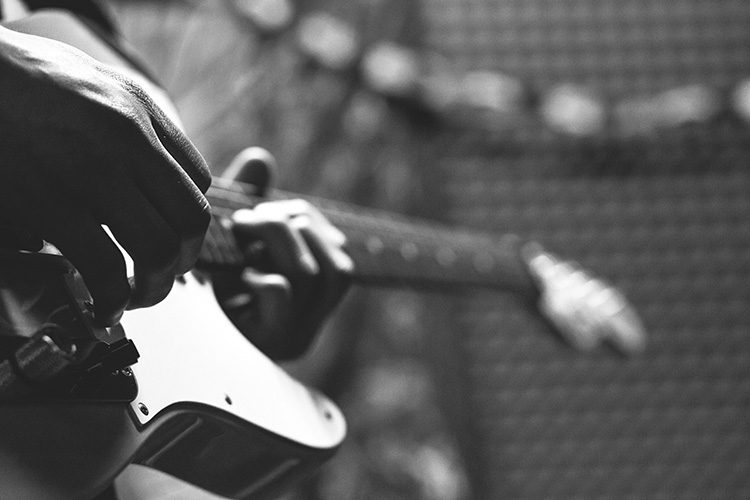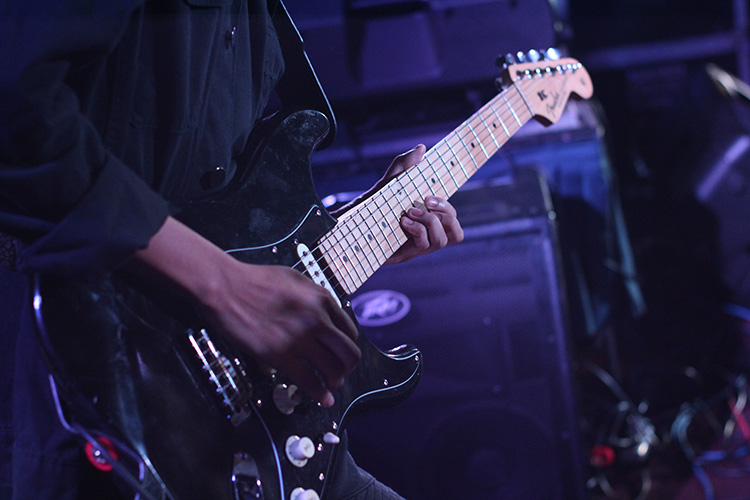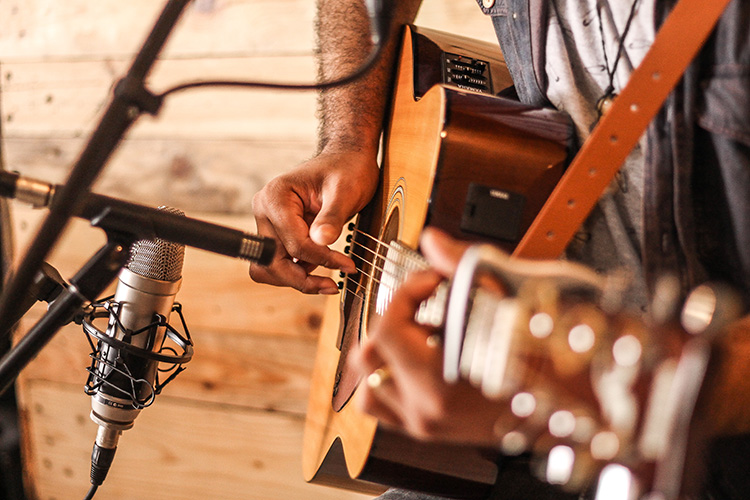Learning how to read music for guitar can be tough, but it doesn’t need to be. In this lesson we’ll show you the easiest ways to read guitar music as well as bonus tips which will turbo-charge your progress.
Over 100,000 guitar-learners get our world-class guitar tips & tutorials sent straight to their inbox:
Click here to join them Get our best guitar tips & videos
In this free lesson you will learn:
- 3 easy ways to read music on guitar.
- 6 essential tips that will turbo-charge your music reading.
How To Read Music For Guitar
Unlike the piano or the trumpet, there are multiple common methods we can employ in order to learn a piece of music.
So what are they, and what do we need to know?
In this lesson, we will break down three distinct methods for reading music for guitar that will help you build a foundation for your knowledge!
Let’s go!
How To Read Music For Guitar: The Three Methods
There are three main ways in which we can learn how to read music for guitar:
- Tablature.
- Chord Boxes.
- Traditional Music Notation.
Everyone has their own preference, but having a good understanding of all three of these methods can help you become a more adaptable player.
One of the major perks of learning how to read music for guitar is that it can help you collaborate with other guitarists and musicians.
The more you learn about how to read music for guitar, the more prepared you will be to speak the language of music with others.
- It’s important to understand that none of these methods are ‘superior’ to one another. As we learn new methods of how to read music for guitar, they only ever stand to make us better musicians.
- Each method should be explored in depth to discover the benefits for yourself.
- A good note to make is that each of these methods of reading music for guitar comes with its own limitations and advantages.
Learning the ins and outs of these three methods will help you become more well-versed in not just your guitar, but music in general. Strive to be versatile!
How To Read Music For Guitar: Tablature (aka ‘TAB’)
So you want to know how to read music for guitar? Then tablature is your golden ticket to becoming the guitarist you want to be.
- Tablature removes the traditional “music staff” and replaces it instead with fret numbers and a horizontal display of our guitar strings.
- When learning how to read music for guitar with tablature, it can look as though we aren’t being given much to work with.
- However, tablature does a great job of enhancing our fretboard knowledge, listening and music reading skills.
By keeping a few key concepts in mind during the initial learning phase, reading tablature can become as easy as reading a book.
When learning how to read music for guitar, tablature looks like this:
- Our low E string is represented by the bottom line.
- Our high E string is represented by the top line.
- Our frets are represented by the numbers shown on each line.
As well as this, our strings are laid out as follows:
- High E (1st string).
- B (2nd string).
- G (3rd string).
- D (4th string).
- A (5th string).
- Low E (6th string).
When reading tab, it’s important to link the strings with the fret numbers.
The fret numbers will ‘sit’ on top of the strings on the tab.
(If you don't understand the above image please read our article "How To Read Guitar Chordboxes In 60 Seconds". It will make everything clear!)
What Does This Mean For Us As Guitarists?
This means that when you play a tab, you MUST look out for the following:
- What string the fret number is on. This tells you what string to play.
- The number. This tells you what fret to play.
Although tablature is the easiest way to read music for guitar, it does present some problems. Tablature gives us no indication of timing, because of this we are forced to use our ears more when trying to work out what to play.
This isn’t a bad thing, though! Training your ears to listen to the music will make you a better player
In many tabs that you will find on websites like Ultimate Guitar, they are often displayed in plain text.
- This doesn’t make them worse, just sometimes more difficult to follow.
- When searching for tabs, always look out for star ratings.
- Many online tablature communities use a rating system to help the reader find the most accurate version of the tab that they’re looking for.
Make sure you always look for five star tabs.
There are some great software resources online that can help us learn how to read music for guitar faster and more efficiently.
The most widely-used and well-known software is Guitar Pro (developed by Arobas Music) currently in its 7th version. You can try it for 30 days free by clicking here
Guitar Pro is a fantastic tool for guitarists of any level, as it allows us to load “digital tabs” into its software for playback, speed training and so much more.
How To Read Music For Guitar – The Pros and Cons of Tablature
Here are the main pros and cons of tablature:
The Pros
- Displays the fretboard in a linear way that is easy to understand, and easier to play along to
- The simplest, most accessible way to learn how to read music for guitar
Can be integrated into software like Guitar Pro or Tux Guitar for a better learning experience. - Requires us to use our ears to determine the finer details such as speed and dynamics
The Cons
- Does not communicate timing, speed or dynamics unless paired with software
- Many free tabs can be inaccurate/poorly written.
- Does not help us to learn music theory
It’s worth noting that tablature is far from a new concept, and has been around in different forms for different fretted instruments for hundreds of years.
Tablature can be dated in its different variations all the way back to instruments such as the lute.
How To Read Music For Guitar: Chord Boxes
Chord boxes are the perfect choice for songwriters and vocalists who are looking to accompany themselves, as they can be quickly and clearly illustrated.
- There is no faster way to communicate what chords you are playing to another person than chord boxes, this makes them a great tool when jamming with others.
- When learning this method of how to read music for guitar, it’s important to note that chord boxes only teach us finger positions for chords.
- While tablature and traditional notation convey a timeline of notes, chord boxes convey static positions.
Let’s take a look at what chordboxes look like:
Chordbox example:
D major chordbox:
Chord boxes are often found in lyric books, used at the top of a page to indicate what chords to play.
This method of learning to read music for guitar is ideal for those of us who want to expand our chord vocabulary.
How Do I Read Chordboxes?
Your chord box strings should read (from left to right):
E A D G B E
If you were to hold up your guitar by the neck and stare at it face-on, this would be the order in which you would see the strings.
E major chord box:
Em Chordbox:
As you can see above, the circles represent the frets that need to be played. As well as this, you will often see numbers written in the circles. This tells you what fingers to use. Here’s what each number means:
1 – Index
2 – Middle
3 – Ring
4 – Pinky
Sometimes, chord boxes will have a number and “fr” next to the box itself. This simply indicates that the chord box begins at a different fret than the open position.
(If you don't understand the above image please read our article "How To Read Guitar Chordboxes In 60 Seconds". It will make everything clear!)
How To Read Music For Guitar – The Pros And Cons of Chordboxes
Let’s take a look at the main pros and cons of chordboxes.
The Pros
- Best way to illustrate and display chords and chord voicings.
- Great for use with flash cards.
- Can be illustrated quickly to aid your communication with other guitarists.
- A fantastic tool for figuring out finger positions.
The Cons
- Does not illustrate any rhythmic patterns or strumming patterns.
- Does not teach us how to play a song, just what chords are being played and what the finger positions look like.
The Chordbox Challenge
Here’s a fantastic way of practicing chords:
- Get a pack of flash cards (or make them yourself by printing the template above).
- Write down as many chords as you know.
- Shuffle the deck and pull from the top, and see how quickly you can play the chord you pulled.
This gets us into some positive habits when it comes to memorizing our chords, as well as learning how to read music for guitar in general.
Make sure you practice often, and have fun with it!
How To Read Music For Guitar: Traditional Music Notation
Although traditional music notation isn’t as popular as tab, music notation is often used in complex styles of music such as jazz and classical music.
- Traditional music notation paints the most complete picture of a piece of music.
- However, there is a trade-off. Traditional music notation provides us with more musical information than tablature or chord boxes.
- This method requires a lot more time and patience to master.
Traditional music notation is its own language and (like tablature) should never be rushed through when learning.
To learn how to read music for guitar when using traditional music notation, we require a small amount of knowledge of music theory to understand how notes move across the staff.
You can find some more information on music theory for guitar here
Traditional music notation divides itself into two main staffs:
- The Treble Clef
- The Bass Clef.
Due to its naturally higher pitch than other instruments, the guitar uses the treble clef.
Let’s take a closer look (We’ve included tabs in here too so you can compare):
We can remember the notes in the spaces and lines on the Treble Clef as follows:
- Spaces: F A C E (in the space)
- Lines: E G B D F (Every Good Boy Deserves Fudge)
You can find more info on traditional notation here
Now, let’s put all of this together.
It's hard to understand which scales work with which keys.
So we created a cheat-sheet! A key and scale-finder that you can use again and again. Get a custom guitar-learning plan here: Click here for GuitarMetrics™ Learn from the world's best guitar educators: Click here for our guitar coursesDownload our lead guitar cheat-sheet to make things easier
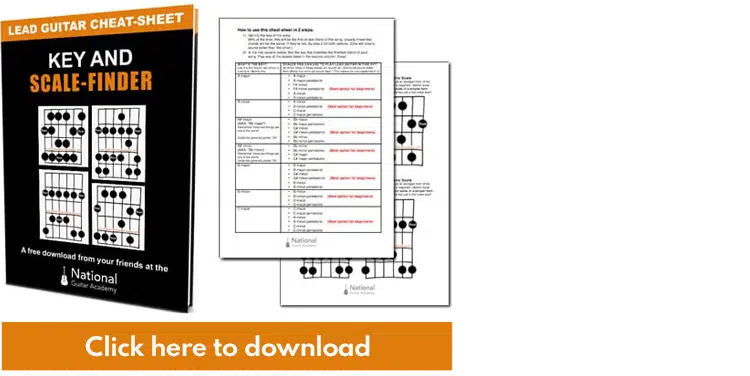
Get your personalised guitar-learning plan 🎸
World-Class Guitar Courses 🌎
How To Read Music For Guitar – The Pros And Cons Of Traditional Music Notation
Let’s take a look at the pros and cons of music notation.
The Pros
- Most concise way to read music for guitar.
- Communicates finer details of musical performance (ex. key signatures, time value, notes, speed and dynamics).
- Notation that is purchased is usually far more well-written and accurate than free tablature.
The Cons
- Requires much more time and effort to memorize and understand.
Not as commonly used in the online guitar community. - Requires basic knowledge of music theory to fully understand.
Case Study #1 – ‘Simple Man’, Three Ways
Let’s take a look at “Simple Man” by Lynyrd Skynyrd.
- In this example, the chord boxes show only the chords themselves.
- This is why they work perfectly with tablature as they give us a clearer understanding of what to play.
- This song gives us a great example of how to read music for guitar.
‘Simple Man’ can be played with chords and can also be accompanied by the short riff played over those chords in bar #3, as seen below.
Case Study #2 – Bad Moon Rising – Three Ways
For this second case study, we’ll take a look at Bad Moon Rising by Creedence Clearwater Revival.
- This song is a fantastic example because it uses 3 chords during the verse.
- The chord boxes tell us what the chords are, and the tablature and notation will show us how to play them.
- Thus, this song gives us three more examples of how to read music for guitar.
Thanks, CCR!
“But which method is the right one for me?”
Keep in mind that there is no ‘right’ way to learn music, and one should never restrict themselves to just one method of learning.
Try not to hold a preference for one of these methods over another.
Each one holds a fountain of possibilities to help you become the guitarist you’ve always dreamed of.
There are plenty of strategies to make things easier when learning how to read music for guitar (or any instrument, for that matter).
One of those things is to try and learn a little bit of everything. Knowledge is power, and when it comes to music, you can never learn ‘enough.’
But that’s just part of the beauty of music, isn’t it?
Take your time to understand the ins and outs of each method.
Patience is a virtue, friends!
Where next?
Here are a few next steps to keep you moving on your guitar journey:
- Pick up a Guitar Chord Flashcard book on Amazon!
- Go to your local music shop and pick up a tab book of some of your favourite songs.
- ICYMI: Download your free guitar chord box template here
(Please insert hyperlink to downloadable template PDF) - Ask your guitar teacher to teach you the basis of reading traditional notation.
- Go to an open mic and find some new friends to jam with.
Keep practicing!
Recommended Resources
If you’re looking to keep learning more about how to read music for guitar, check out some more of our lessons below!!
- Guitar Tabs For Beginners: 20 Easy Songs That Sound Great
- How To Read Guitar Tabs
- Acoustic Guitar Tabs – 19 Easy Songs That Sound Amazing
- Learn Guitar Chords: A 6-Step Program For Rapid Chord Skill
- Guitar Chords For Beginners: 14 Easy Chords
Take our 60-second quiz & get your results: Take The Quiz Click here to learn more about National Guitar Academy membership Look cooler! Check out our merch: Click here to see our merch store Join over 100,000 guitar-learners and subscribe to our guitar-tips-by-email service. (It's free.) We'll send you a series of lessons that will move you to the next level of your guitar journey. Learn how everything fits together quickly, easily and effectively. We share ninja tips (for instant fun!) but also timeless fundamentals that will deepen your understanding.What Type of Guitarist Are You?
Join the world's best online guitar school 🌎
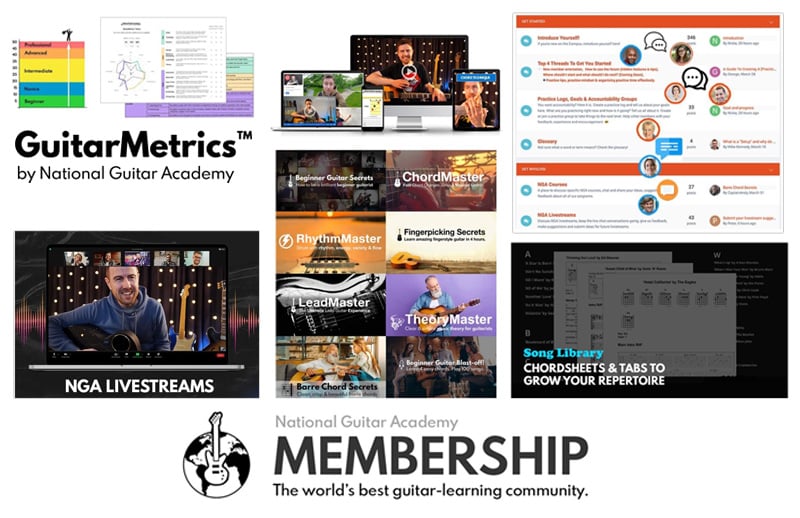
Cool Guitar T-shirts 😎
Want free guitar tips and video lessons delivered to your inbox?


Get our best guitar tips & videos
How To Learn Guitar: An 11-Step Programme For Beginners How To Choose The Perfect Beginner Guitar Learn about National Guitar Academy: About Us Join us on Facebook for daily guitar tips. Listen to our Learn Guitar Podcast for rapid guitar progress. Check out our free chord lessons.Popular Lessons
More Cool Guitar Stuff




